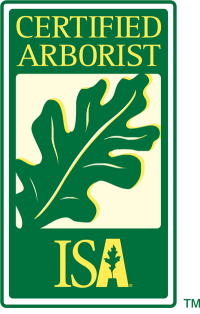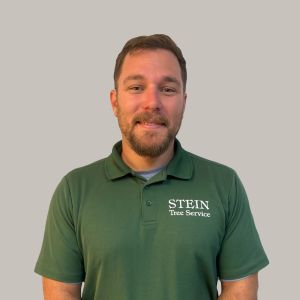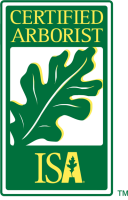What is Beech Leaf Disease (BLD)?
In North America, Beech Leaf Disease was first identified in 2012 in Lake County, Ohio, on native American beech (Fagus grandifolia). Since then, the disease has spread into the Mid-Atlantic region. Today, BLD is confirmed in all 67 Pennsylvania counties, multiple Maryland counties (including Anne Arundel, Howard, Baltimore, and Montgomery), and in parts of Delaware.
The disease is caused by a microscopic foliar nematode, Litylenchus crenatae mccannii, which overwinters in buds and damages developing leaves in spring. Spread of this nematode is believed to occur via rain, wind, animals, and human activity—making prevention a community-wide effort.
Signs and Symptoms of Beech Leaf Disease
Property owners in Delaware, Pennsylvania, and Maryland should watch for these telltale symptoms:
- Dark banding, either dark green or yellow, between leaf veins, especially visible from below in backlighting (This leaf striping of symptomatic leaves is one of the most recognizable signs)
- Leaf curling, puckering, thickening, or a leathery feel
- Premature leaf drop, leading to thinning canopy coverage
- Buds that fail to open in spring, leaving bare branches
- Twig and branch dieback over time
Early detection is key to slowing the spread—especially in residential neighborhoods where beech trees may be close together.
Which Beech Trees Are Affected?
BLD impacts several beech species in our region:
- American beech (Fagus grandifolia) — native to the Mid-Atlantic and common in forests
- European beech (Fagus sylvatica) — a popular ornamental in landscapes
- Oriental beech (Fagus orientalis) — less common but still susceptible
Both native and ornamental beeches in Delaware, Pennsylvania, and Maryland can develop BLD.
BLD Treatment and Management Options
While there is no permanent cure for Beech Leaf Disease, research by universities and forestry agencies has identified several treatments that may help slow progression and reduce symptoms in high-value trees. These methods are still considered part of an evolving management strategy and should be applied by trained professionals.
Trunk Injections with
Arbotect 20-S (thiabendazole)
Used under certain state allowances and experimental protocols, this fungicide has shown promise in reducing nematode populations and leaf symptoms, particularly on larger beech trees. Arbotect 20 S must be applied only by licensed applicators under SLN (Special Local Needs) labeling.
Fluopyram-Based Applications
Fungicides/nematicides containing fluopyram have demonstrated early success in research trials, lowering nematode levels in affected leaves, especially in ornamental plantings.
Potassium Phosphite Bark Sprays
Among the most studied approaches, twice-yearly phosphite bark sprays have been shown in trials to lessen leaf damage, defoliation, and twig dieback, with improvements becoming more apparent over multiple seasons. Although outcomes are promising—with potential benefits as early as one year—full benefits may take two to three years to be fully realized, according to research.
These treatments are most effective when combined with good Plant Health Care practices, such as proper watering, mulching, pruning, and nutrient management, to improve the tree’s overall vigor and resilience. Ongoing monitoring by a certified arborist is key to identifying changes in tree health and adjusting treatments accordingly.
The Risk for Delaware, Pennsylvania, and Maryland Landscapes
BLD can kill young trees within just a few years and cause long-term decline in mature specimens. For homeowners, municipalities, and property managers, losing beech trees not only affects aesthetics but also impacts shade, wildlife habitat, and property value.
Frequently Asked Questions About Beech Leaf Disease (BLD) and Tree Care
Below are answers from our arborist about common questions.
Beech Leaf Disease is caused by a microscopic nematode (Litylenchus crenatae mccannii) that damages buds and leaves, leading to dark leaf banding, canopy thinning, and eventual decline or death of beech trees.
Since its discovery in 2012 in Ohio, BLD has been detected in at least 15 U.S. states—including Delaware, Pennsylvania, and Maryland—as well as in Ontario, Canada.
Common signs include:
- Dark green or yellowish bands between leaf veins
- Curling, puckering, or leathery leaves
- Premature leaf drop
- Buds that fail to open in spring
- Twig and branch dieback
BLD impacts native American beech (Fagus grandifolia), European beech (Fagus sylvatica), and Oriental beech (Fagus orientalis).
No cure exists at this time. However, research-based treatments and good cultural care can help slow disease progression and improve tree resilience.
Penn State Extension notes there is no permanent cure but reports that phosphite fertilizers may help improve a tree’s vitality and could suppress nematode activity. They also encourage regular monitoring and reporting of suspected cases.
Research trials have shown that:
- Arbotect 20-S (thiabendazole) trunk injections can reduce nematode levels in some cases.
- Fluopyram-based applications have lowered nematode counts in ornamental settings.
- Potassium phosphite bark sprays can reduce leaf symptoms, defoliation, and twig dieback.
These should be combined with overall Plant Health Care practices for best results.
Young saplings may die within 2–5 years, while mature trees decline more slowly but are still at long-term risk.
Not necessarily. Some trees may respond well to treatments, and others may show natural resistance. Consult a certified arborist before removing any tree.
Prevention is challenging due to the nematode’s ease of spread, but early detection and cultural management can help reduce impact.
PHC is a proactive, holistic approach to maintaining tree and shrub health. It includes monitoring for pests and diseases, improving soil conditions, and applying targeted treatments when needed.
At least once a year is recommended, especially if you have mature trees or live in an area where pests or diseases like BLD are active.
Our PHC programs include disease and pest management, deep-root fertilization, structural pruning, tree risk assessments, soil care, and safe tree removal when necessary.

Certified arborists have the training, experience, and credentials to accurately diagnose problems, recommend effective treatments, and ensure tree work is done safely and to industry standards.
Stein Tree Service is the oldest independently owned tree service in Delaware. We have been providing exceptional tree care to homeowners and businesses for over 40 years, and our team is committed to helping your landscape’s trees and plants thrive.
Why Choose Stein Plant Health Care Services
FREE
Consultation
We offer a free consultation with our experts to evaluate your landscape and its current or potential problems. We provide a solution based on YOUR landscape needs.
Expert Care by Certified Arborist
Our arborist is ISA-certified and experienced in all types of plant and tree problems, including pests like emerald ash borer, plant and tree disease issues, and damaged trees.
Affordable
Care
Stein offers competitive rates for plant health care and for all our services, including tree removal and emergency storm cleanup. We provide excellent value, balancing quality service with cost-effectiveness.
Licensed and Insured
We are fully licensed and insured, protecting your interests as well as ours. While our team consists of highly experienced professionals, our comprehensive insurance coverage means you’re protected against any unforeseen incidents.
What Our Clients Say About Us
Choosing a professional to care for your landscape’s plants and trees is a big decision, and great references can help make the choice easier. We get a lot of our business from word of mouth endorsements, because we are committed to treating your landscape like our own. See what a few of our clients have to say:


